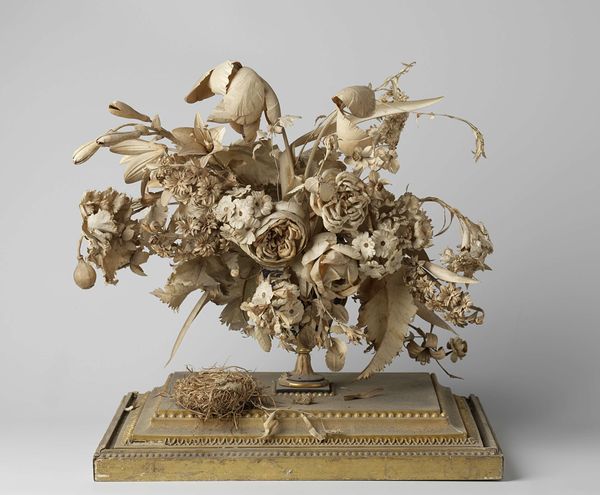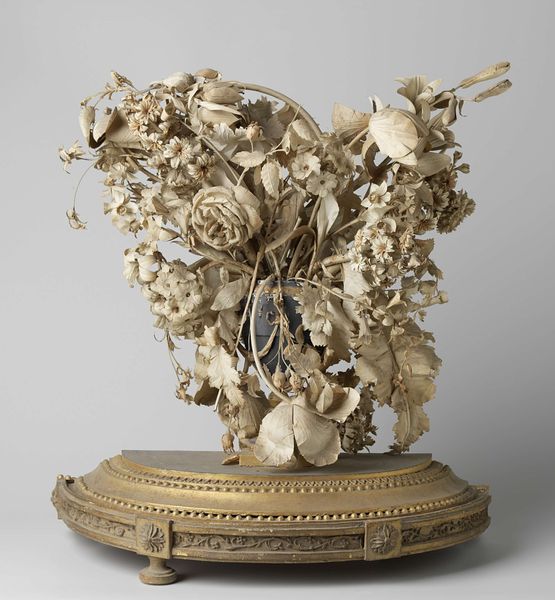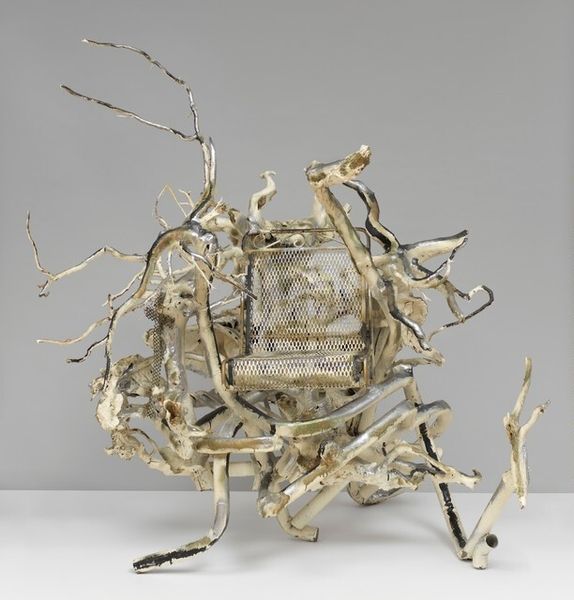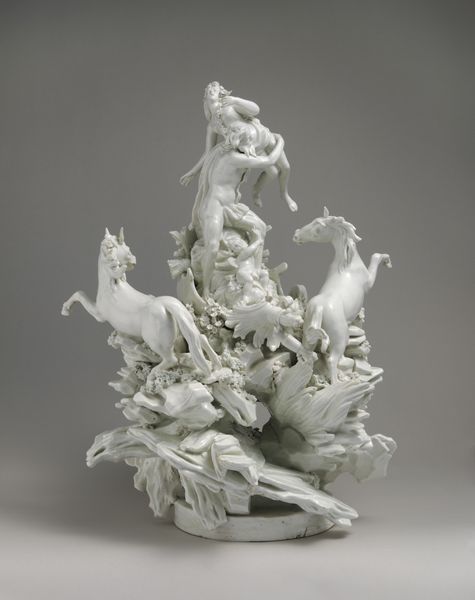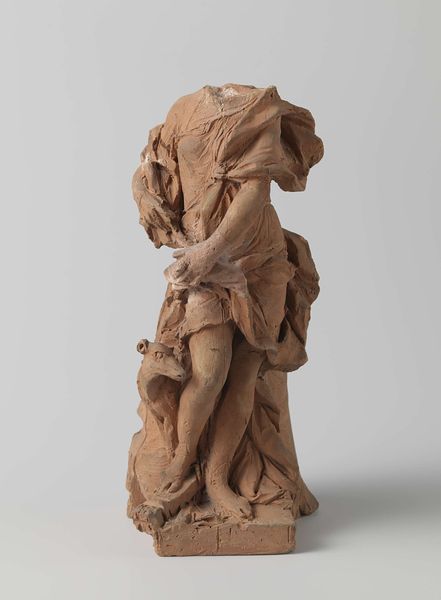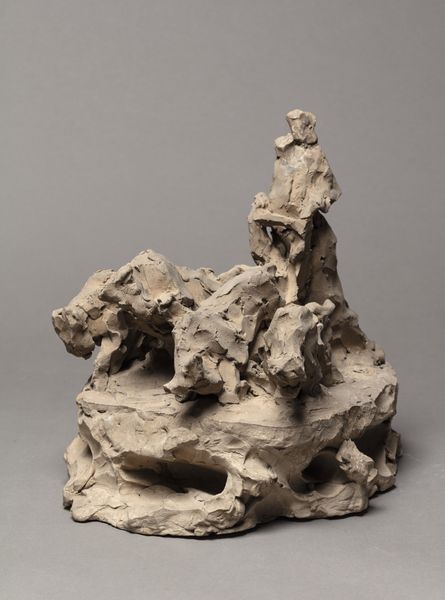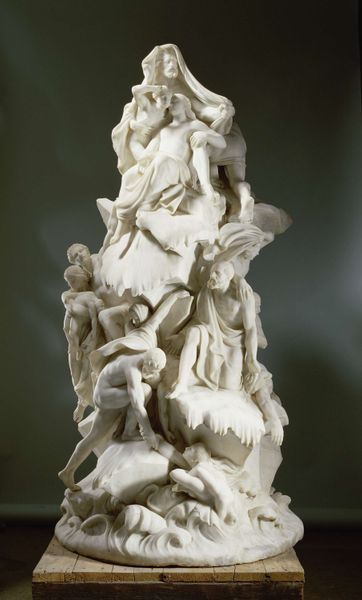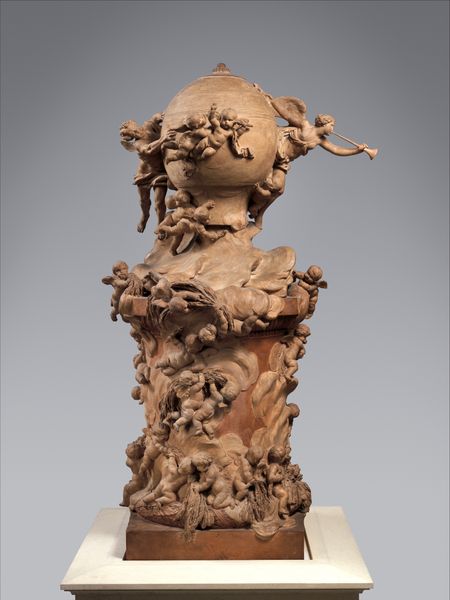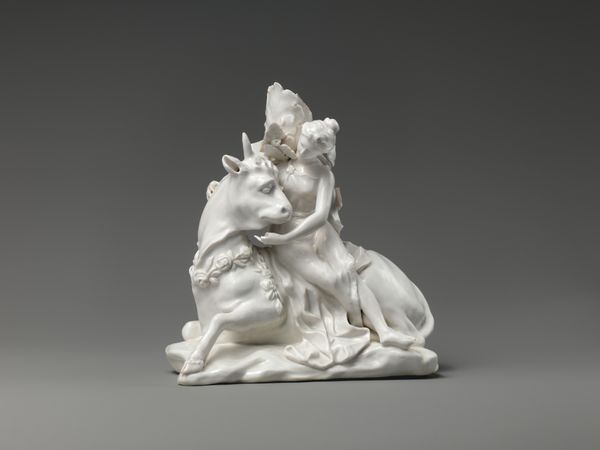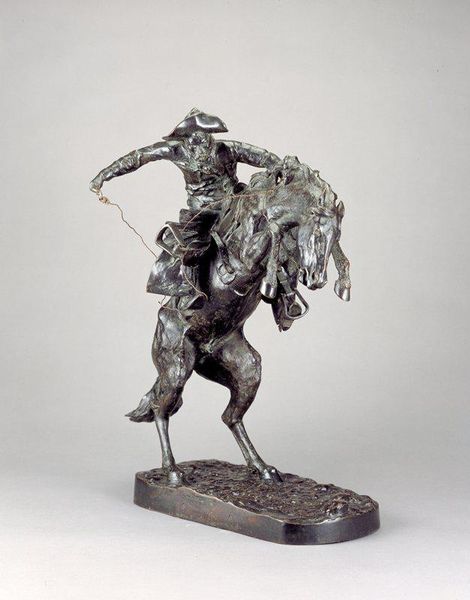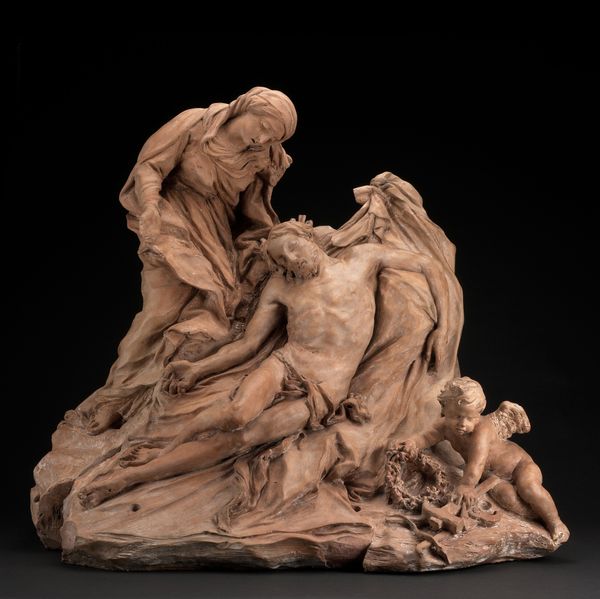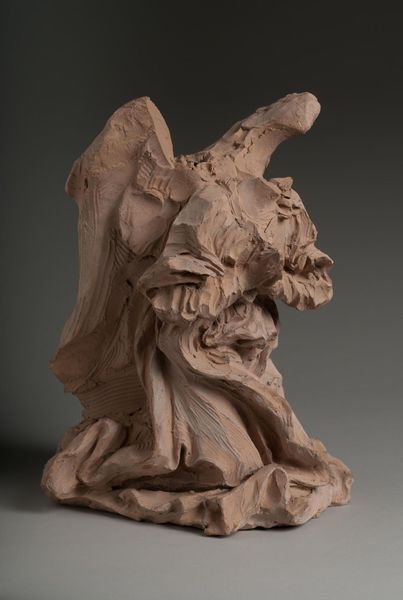
assemblage, paper, sculpture, wood
assemblage
structure
sculpture
paper
sculpture
wood
Dimensions: height 56.5 cm, width 39.5 cm
Copyright: Rijks Museum: Open Domain
Curator: This intriguing sculpture, titled "Bloemenruiker van geknipt papier," which translates to "bouquet of cut paper," was created by Hendrik van Irkoven sometime before 1881, crafted from paper and wood. Its muted palette gives it a ghostly appearance. What stands out to you? Editor: It's definitely the contrast between the delicacy of the paper and the almost morbid feel of a bouquet past its prime. The fragility is evident. What sort of symbolism might a piece like this hold, and what might van Irkoven have intended by creating such an ephemeral still life? Curator: Indeed. Paper itself is fascinating – historically associated with communication, knowledge, ephemerality. To mimic organic matter with paper suggests an interest in capturing the fleeting nature of beauty. The floral arrangement is itself a loaded symbol; from the Dutch Golden Age onward, floral still lifes often served as reminders of *vanitas,* the transience of life and earthly pleasures. Considering that this piece predates 1881, it's highly probable that the artist was influenced by this visual and cultural memory. Doesn't the monochromatic palette emphasize that sentiment? Editor: Yes, absolutely. The limited palette reinforces the feeling of decay, contrasting with the vibrant colors usually associated with flower bouquets. It makes you wonder about themes of mortality. Was this a common sentiment or practice to be memorialized this way? Curator: While unusual, representing organic matter with meticulously cut and assembled paper speaks to the human impulse to capture, preserve, and find beauty even in the face of inevitable decay. And consider, bouquets were and are given as symbols of love, congratulations, friendship… perhaps the artist memorialized such feelings and memories here. Editor: That’s a thought-provoking perspective. I’ll never look at a floral arrangement the same way again. Curator: It highlights how even seemingly simple subjects are imbued with layers of meaning, shaped by culture, time, and our own psychological landscapes.
Comments
No comments
Be the first to comment and join the conversation on the ultimate creative platform.
